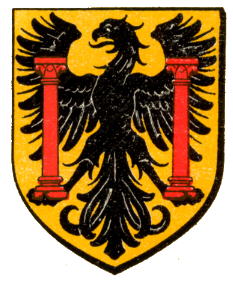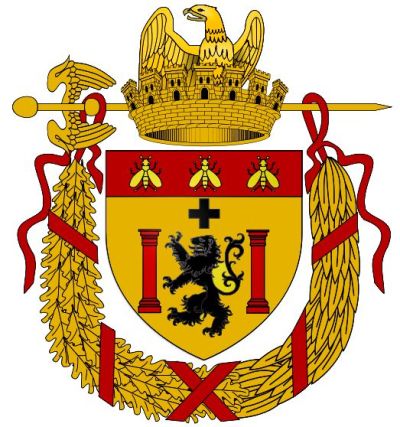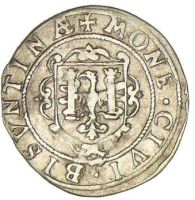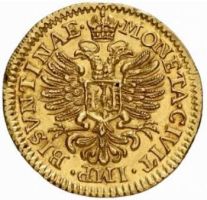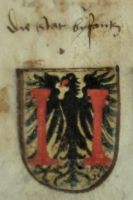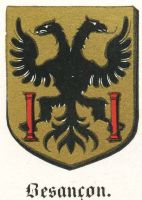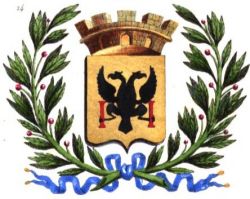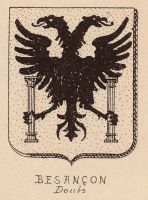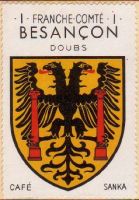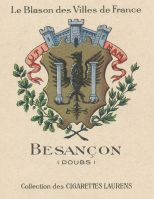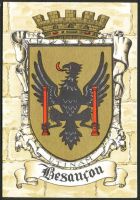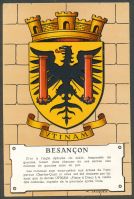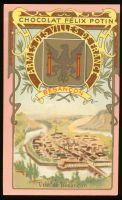Besançon: Difference between revisions
Knorrepoes (talk | contribs) m (Text replacement - "↵{{media}}↵↵[[Category:French Municipalities" to " {{fr1}} {{media}} [[Category:French Municipalities") |
Knorrepoes (talk | contribs) m (Text replacement - "{{fr}}" to "") |
||
| Line 1: | Line 1: | ||
'''BESANÇON''' | '''BESANÇON''' | ||
Revision as of 07:24, 29 November 2022
BESANÇON
Département : Doubs
| French | D'or à l'aigle de sable, tenant de ses serres deux colonnes de gueules brochant sur les ailes. |
| English | No blazon/translation known. Please click here to send your (heraldic !) blazon or translation |
Origin/meaning
The city of Besançon received arms in 1535 by Emperor Charles V. These arms showed the double-headed Imperial Eagle, with the two colums taken from the arms of Spain and the Emperor. They also refer to the old Roman road passing through the city.
At the same time the city also was granted the motto Plus Ultra, taken from the Imperial arms, which was later changed to Utinam (roughly translated as to Please God). The motto is not officially used at present.
The double-headed eagle was rapidly reduced to a single-headed eagle afterwards.
During Napoleonic times, the city received new arms, with a black lion instead of the eagle. In addition to that the city was granted the right to use three bees in the chief, as a city of first rank.
| The arms from 1804-1815 |
In the beginning of the 20th century the arms were still used with a double-headed eagle (see image below), but the city nowadays uses again a normal eagle.
The arms in the Café Sanka album +/- 1932
The arms on a tobacco card by Laurens
The arms on a postcard by Kroma
Literature: Louis, 1949
Contact and Support
Partners:
Your logo here ?
Contact us
© since 1995, Heraldry of the World, Ralf Hartemink 
Index of the site
